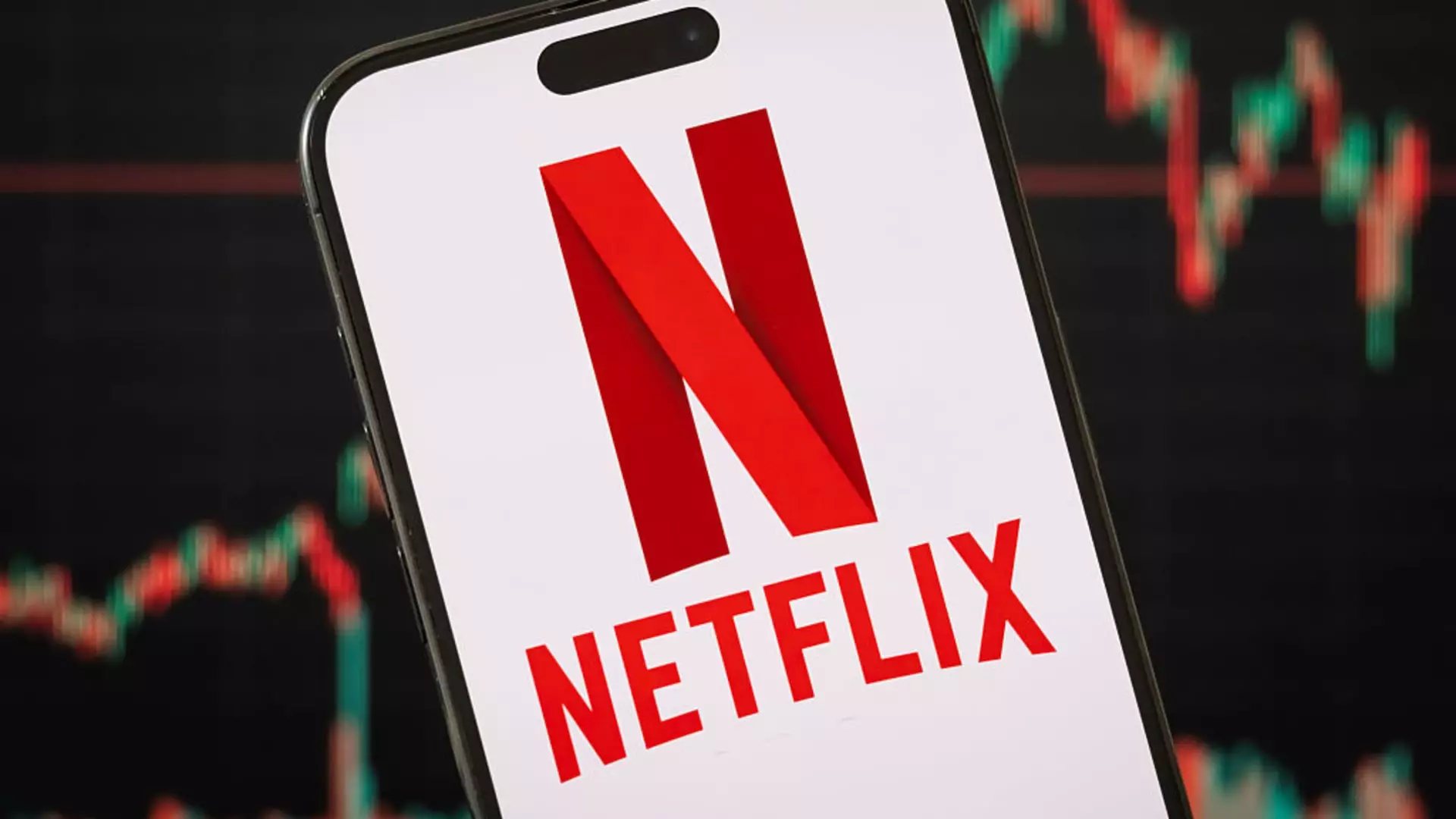Netflix has recently shattered expectations, achieving an impressive 11 consecutive days of trading without a single decline in its stock price. This remarkable streak has marked the company’s most successful period since its inception. The last record, set in late 2018, saw a mere nine-day positive trajectory under less tumultuous market conditions. Yet, in the wake of significant upheaval in global trade and economic conditions, Netflix defies the odds, reflecting its robust resilience.
As the stock charts climb to unprecedented heights, we witness Netflix emerge as not just a leader in the streaming industry, but an exemplar of strength and stability. Notably, since mid-January, amid a turbulent political landscape, shares have surged over 30%. This brings to light a critical inquiry: what exactly is fueling this fervor in investor confidence despite broader market anxieties?
Earnings Reports: A Beacon of Growth
The catalyst for Netflix’s latest momentum is undoubtedly the optimistic earnings report released on April 17, where the company disclosed a 13% revenue increase for the first quarter of 2025. This surge can primarily be attributed to higher-than-expected subscription figures and flourishing advertising revenue. In a climate where many companies are grappling with adverse economic changes driven by tariffs and trade wars, Netflix seems insulated, buoying investor sentiment and encouraging further growth forecasts between $43.5 billion and $44.5 billion for the year.
Co-CEO Greg Peters articulated this sentiment during the earnings call, expressing an unwavering confidence in their business outlook. “There’s been no material change to our overall business outlook,” he stated, underscoring a belief that Netflix will withstand the storm that many traditional media stocks cannot manage. Ultimately, Peters’ remarks convey a message that the company not only anticipates resilience during challenging economic times, but also reassures stakeholders of its commitment to maintaining a steady course amid chaos.
Resilience in the Face of Adversity
While traditional media giants like Warner Bros. Discovery and Disney are seeing their stocks hammered, Netflix continues to climb despite external pressures. The company’s advantage stems not only from its innovative offerings but also from a consumer behavior pattern that prioritizes affordable entertainment options during economic downturns. Streaming services like Netflix have positioned themselves as indispensable in our modern lives, fostering an environment where cutting subscriptions can feel counterproductive to personal entertainment.
The broader media landscape, in contrast, is displaying vulnerability to economic shifts, with companies that rely heavily on traditional content distribution models feeling the squeeze. In this sense, Netflix is not just surviving; it is thriving, using its adaptability to maintain an audience while others falter.
Analyst Optimism: The Path Ahead
Market analysts appear similarly bullish about Netflix’s trajectory. A recent report from JPMorgan underscores the platform’s dominance, claiming it has cemented its status as the leading global streaming service. The upcoming Advertising Upfronts in May could further invigorate share prices, suggesting a favorable outlook for continued expansion. But with subscription price hikes—now resting at $17.99 for the standard package—the question remains: how long can this growth be sustained?
The historical context of economic resilience in entertainment gives us pause. Entertainment spending often remains stable even in downturns, a factor that Netflix benefits from as it explores diversified revenue streams. The ad-supported plan, priced at $7.99, opens new access points for consumers while generating additional income without compromising existing subscriber value.
The Challenge of Transparency
Despite these promising indicators, there is a nagging concern: Netflix’s decision to withhold subscriber growth numbers raises questions regarding sustainable momentum. While focusing on revenue is essential, understanding the actual subscriber change is equally critical for gauging long-term health.
Netflix’s relentless ascent is a fascinating juxtaposition in a tumultuous economic environment. Their current rejuvenation contradicts the prevailing narrative swirling around the media industry, marking them not just as a participant but a leader among streaming giants. As we look ahead, their behavior in the evolving landscape will no doubt hold profound implications for both investors and consumers alike.

